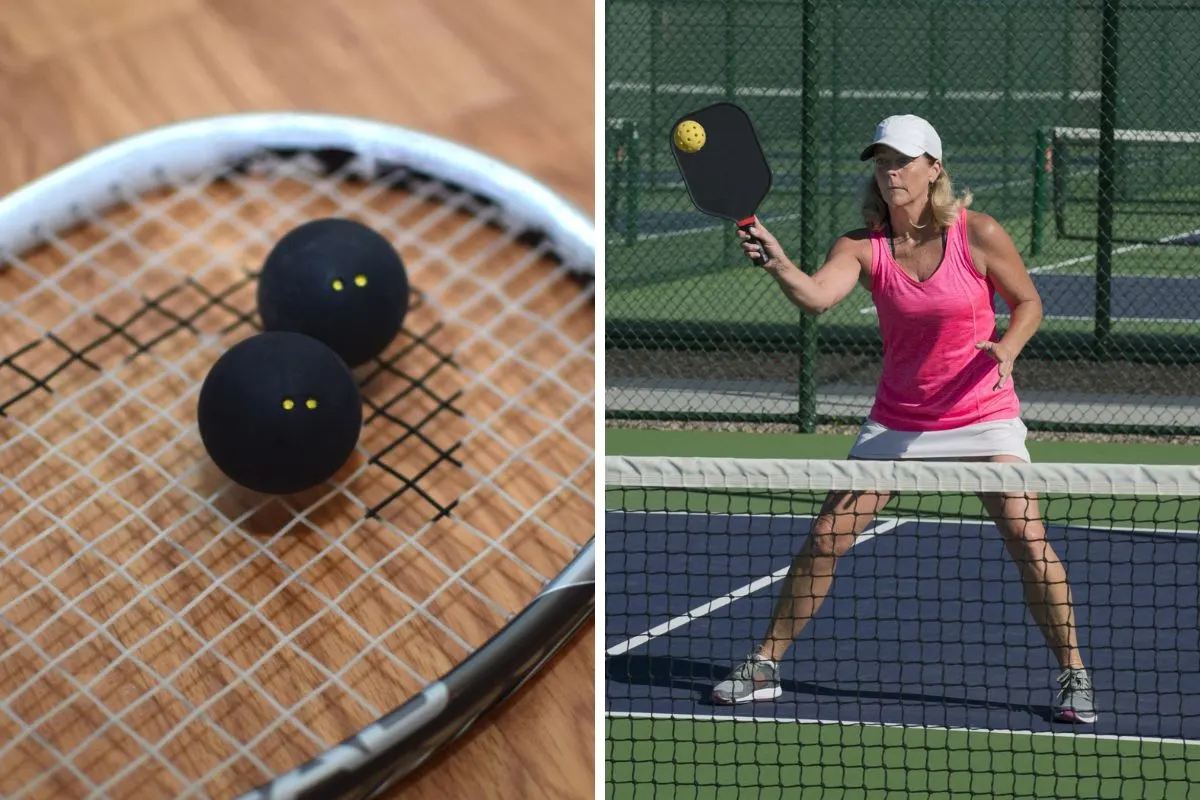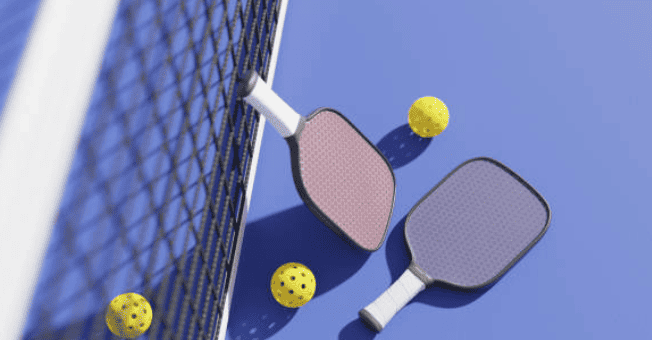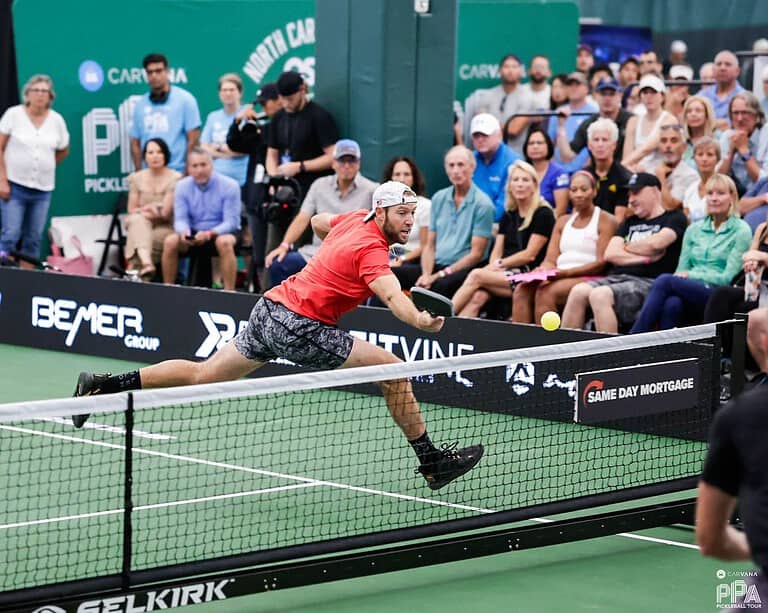Pickleball and Squash: 6 Clear Differences
Pickleball and squash are two racquet sports that have been gaining popularity in recent years. While both sports involve hitting a ball with a racquet, there are significant differences between the two. In this article, I will explore the differences between pickleball and squash to help you decide which sport is right for you.
One of the most significant differences between pickleball and squash is the court size. A pickleball court is smaller than a squash court and is similar in size to a badminton court. On the other hand, a squash court is much larger and has four walls that the ball can be bounced off. Another difference is the equipment used in each sport. Pickleball is played with a lightweight plastic ball and a paddle, while squash is played with a small, hard rubber ball and a racquet.
If you’re new to racquet sports and trying to decide between pickleball and squash, it’s essential to understand the differences between the two. Each sport has its own unique set of rules, equipment, and court size, which can make a big difference in the way the game is played. By understanding the differences between pickleball and squash, you can choose the sport that best suits your interests and abilities.
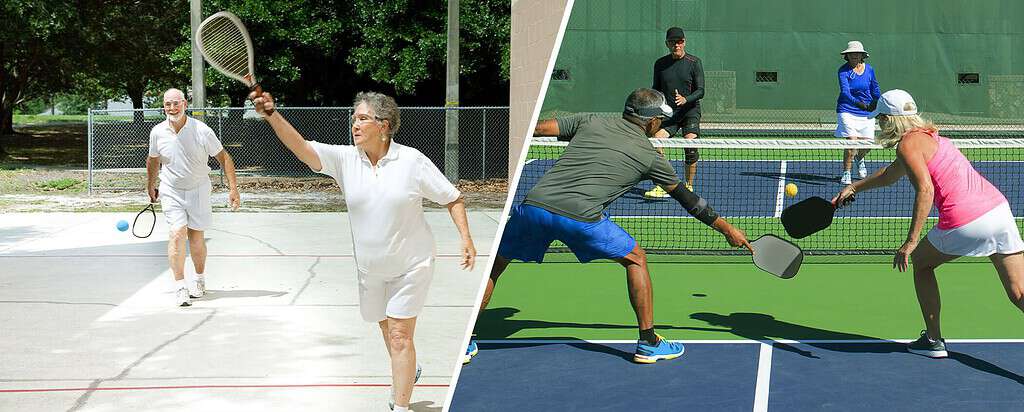
Overview of Pickleball and Squash
Pickleball and squash are two popular racquet sports that are played all over the world. While both sports have some similarities, there are also some significant differences between them.
Pickleball is a relatively new sport gaining in popularity that was invented in the 1960s. It is played on a court that is about one-third the size of a tennis court. The game is played with a paddle and a lightweight plastic ball. The ball is served underhand and must bounce once on each side of the court before it can be hit in the air. The non-volley zone is an area close to the net where players are not allowed to hit the ball in the air.
Squash, on the other hand, has been around for over a century. It is played on a much smaller court than pickleball, and the ball is hit against the front wall of the court. The game is played with a racquet, and the ball is smaller and heavier than the ball used in pickleball. Squash is a fast-paced game that requires a lot of skill and agility.
One of the biggest differences between the two sports is the equipment used. Pickleball is played with a paddle, while squash is played with a racquet. The paddle used in pickleball is much smaller than a squash racquet, and it has a larger surface area. The ball used in pickleball is also much lighter than the ball used in squash.
Another difference between the two sports is the court size. Pickleball courts are smaller than squash courts and are usually played outdoors. Squash courts are typically played indoors and are much smaller than tennis courts.
Pickleball and squash are two very different racquet sports that require different skills and equipment. While both sports are fun and challenging, they are also very different in terms of the rules, equipment, and court size.
1. Origins and History
Pickleball and squash are two popular racquet sports played around the world. While pickleball is relatively new, squash has a long and rich history. In this section, I will provide a brief overview of the origins and history of both sports.
Squash
Squash originated in England in the early 19th century as a variation of the game rackets. It quickly gained popularity and spread to other countries, evolving into the modern game we know today. The first squash court was built in Harrow School in England in 1864, and the first squash club was established in 1904 in the United States.
Over the years, the game has undergone several changes, including the introduction of a softer ball and the use of glass walls in modern courts. Today, squash is played in over 185 countries and is recognized as an Olympic sport.
Pickleball
Pickleball was invented in 1965 on Bainbridge Island, Washington, by Joel Pritchard, Bill Bell, and Barney McCallum. The game was originally played with a wiffle ball and wooden paddles, and the court was the same size as a badminton court.
The game quickly gained popularity, and by the 1970s, it had spread across the United States. Today, pickleball is played in over 40 countries and is one of the fastest-growing sports in the world.
While squash and pickleball have different origins and histories, squash has a long and rich history that dates back to the 19th century, and pickleball is a relatively new sport that was invented in the 1960s. Despite their differences, both sports are enjoyed by millions of people around the world.
2. Court Specifications
As I compare pickleball and squash, one of the most significant differences between them is their court specifications.
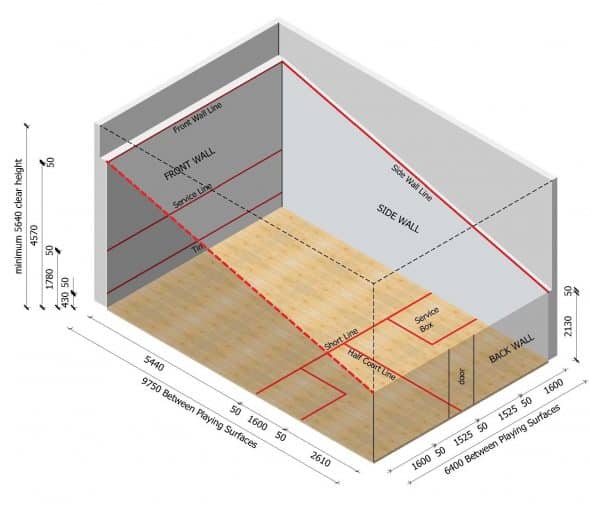
A squash court measures 9.75 meters long by 6.4 meters wide, while a pickleball court measures 20 feet x 44 feet. The walls of a squash court are commonly painted in bright colors, making it easier for players to see where their shots land. Unlike squash courts, pickleball courts do not have borders and can be either indoor or outdoor.
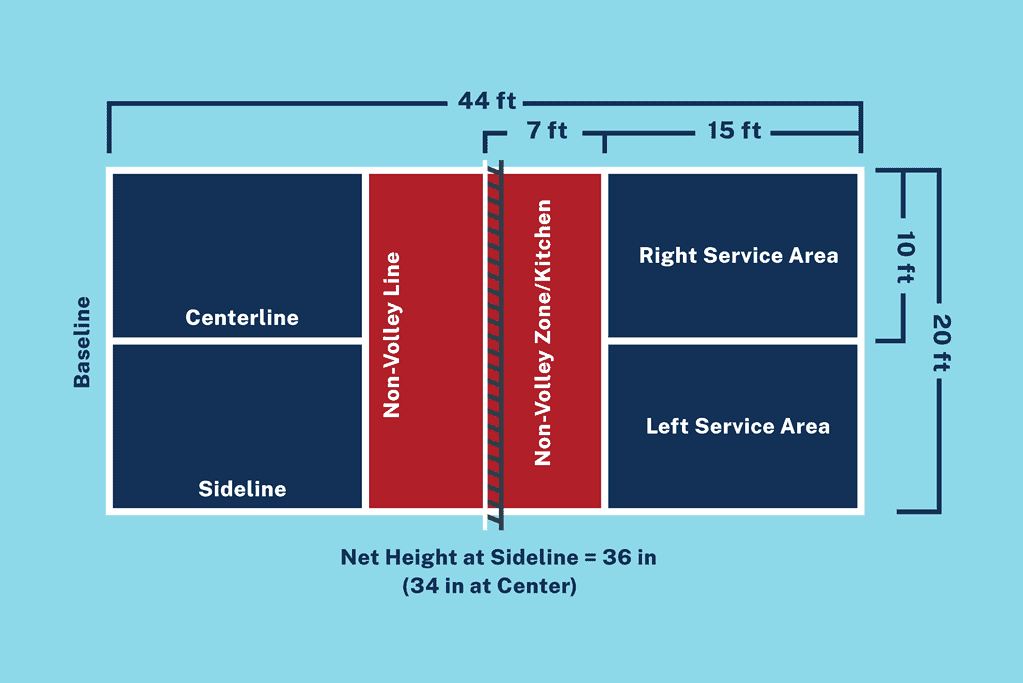
Pickleball courts can be set up indoors as well as outdoors. In size, the pickleball court measures about 44 feet in length and 20 feet in width and is considered to resemble a badminton court. You can even play pickleball on a tennis court easily.
Both pickleball and squash require a net, but the height of the net is different. A squash net is 17 inches high, while a pickleball net is 34 inches high at the center and 36 inches high at the posts. The low net (vs tennis) in pickleball emphasizes quick reflexes and agility, while the net in squash requires more power and precision.
So, as you can see, the court specifications of pickleball and squash differ significantly. While squash courts are smaller and have walls, pickleball courts are larger, have a low net, and can be set up indoors or outdoors. The differences in court size and net height result in different playing styles and strategies for each sport.
3. Equipment Used In Pickleball and Squash
When it comes to equipment, pickleball and squash, have some key differences. Both sports require a racquet and a ball, but the specifics vary quite a bit.
Pickleball Equipment
Pickleball is typically played with a lightweight paddle made of composite materials or graphite. The paddle is larger than a squash racquet, with a surface area of around 80-90 square inches. Pickleball paddles are designed to be easy to handle, with a comfortable grip and a wide sweet spot that makes it easier to hit the ball.
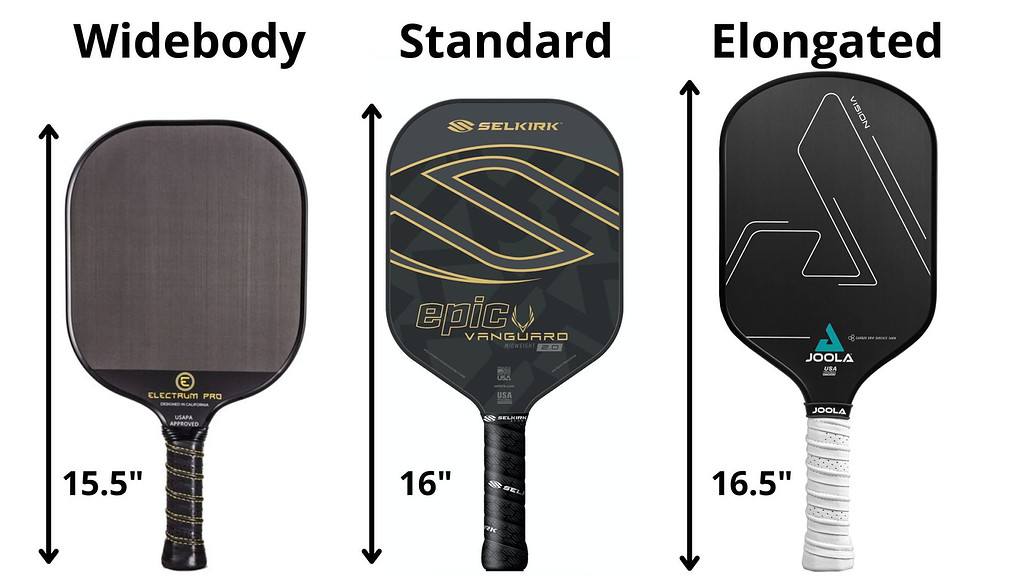
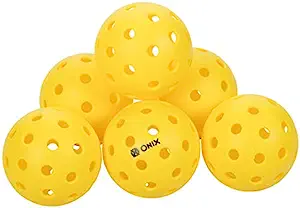
The ball used in pickleball is made of lightweight plastic and has holes in it. This design helps to slow the ball down and make it easier to control. There are different types of pickleball balls available, with varying levels of bounce and durability depending on the playing surface and skill level of the players.
Squash Equipment
Squash is played with a smaller, heavier racquet made of materials like graphite, composite, or carbon fiber. Squash racquets typically weigh between 110-200 grams and have a smaller surface area than a pickleball paddle. The strings on a squash racquet are also much tighter than those on a pickleball paddle, allowing for more control and precision.
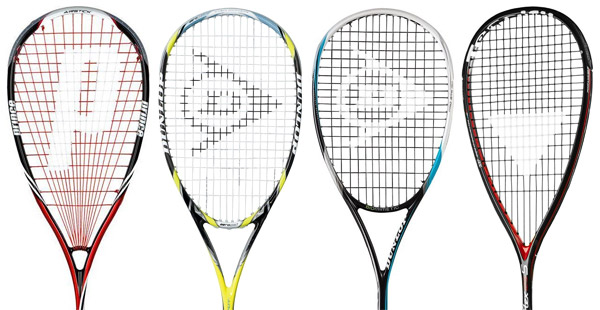
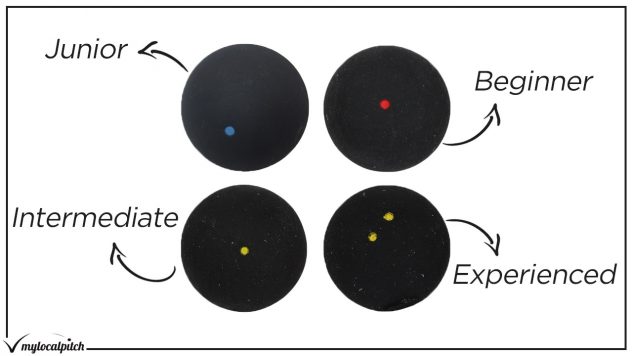
The ball used in squash is made of rubber and is much smaller than a pickleball. Squash balls come in different levels of hardness, with softer balls designed for beginners and harder balls for more advanced players.
The walls of a squash court are also an important part of the equipment, as they allow the ball to bounce off at different angles and add an extra level of challenge to the game.
Overall, both pickleball and squash require specific equipment that is designed to meet the unique demands of each sport. Whether you prefer the lightweight paddle and plastic ball of pickleball or the heavier racquet and rubber ball of squash, there is no shortage of options available for players of all skill levels.
4. Rules and Scoring
In terms of rules and scoring, pickleball and squash have some notable differences.
Pickleball Rules and Scoring
In pickleball, the game is played to 11 points, and the winning team must win by two points. Points are only scored by the serving team, and the serve must be underhand.
The serve must also land in the opponent’s service box, and the return must bounce once before being hit by the receiving team. After the serve, both teams must hit the ball back and forth until one team fails to return it, resulting in a point for the serving team. The server continues to serve until they lose a point, at which point the server switches to the other team.
Squash Rules and Scoring
Squash is played to 11 points as well, but the winning player must win by two points. Unlike pickleball, points can be scored by either player, and the serve can be overhand or underhand. The serve must land in the opponent’s service box, and the return can be hit before or after the ball bounces once. After the serve, the players must hit the ball back and forth until one player fails to return it, resulting in a point for the opposing player. The server changes every time a point is scored, and the player who wins the rally serves the next point.
In both pickleball and squash, there are rules regarding the serve, such as the ball having to land in a specific area and the serve being underhand in pickleball. Additionally, both sports use a rally scoring system, where points are scored on every play rather than just when a team or player is serving. However, there are also some differences between pickleball and squash, such as the fact that squash allows overhand serves and that the serving team in pickleball is the only one that can score points.
Overall, understanding the rules and scoring of each sport is crucial to playing them effectively. By familiarizing yourself with these aspects of the game, you can improve your chances of success on the court.
5. Techniques and Strategies
When it comes to pickleball and squash, both sports require different techniques and strategies. In pickleball, the lightweight plastic ball and the non-volley zone emphasize strategy over power. The goal is to outsmart your opponent by placing the ball in hard-to-reach areas on the court.
One of the most important techniques in pickleball is the dink shot. This shot involves placing the ball just over the net with a soft touch, forcing your opponent to move forward and hit a difficult shot. Another key technique is the lob shot, which involves hitting the ball high in the air to push your opponent back and create space on the court.
In squash, the walls that the ball can be bounced off bring many more angles into play. Squash requires a mix of power and finesse, as players must be able to hit the ball hard while also maintaining control.
One of the most important strategies in squash is to control the T. The T is the area where the service line and the mid-court line intersect, and it is the ideal position to hit shots from. By controlling the T, players can dictate the pace of the game and force their opponent to move around the court.
Agility and footwork are essential in both pickleball and squash, as players must be able to move quickly and change direction at a moment’s notice. Mental toughness is also important, as players must be able to stay focused and remain calm under pressure.
Transitioning from offense to defense and vice versa is also crucial in both sports. In pickleball, players must be able to quickly move from the non-volley zone to the baseline to defend against shots. In squash, players must be able to transition from attacking shots to defensive shots and vice versa.
Overall, both pickleball and squash require a mix of techniques and strategies to be successful. By mastering these skills and staying mentally tough, players can compete at a high level in either sport.
6. Physical and Skill Requirements
To play either pickleball or squash, you need to have a certain level of physical fitness and skill. The requirements for each sport differ slightly, but both demand a certain level of strength, agility, and hand-eye coordination.
Physical Requirements
Pickleball is generally considered to be less physically demanding than squash. The court is smaller, and the ball is lighter, which means that you don’t need to cover as much ground or hit the ball as hard. However, pickleball still requires a certain level of fitness. You need to be able to move quickly around the court, change direction at a moment’s notice, and maintain your balance while hitting the ball.
Squash, on the other hand, is a much more physically demanding sport. The court is larger, and the ball is heavier, which means that you need to be able to cover more ground and hit the ball with more force. Squash players need to have excellent endurance, as matches can last for several hours.
Skill Requirements
Both pickleball and squash require a certain level of skill. However, the learning curve for pickleball is generally considered to be less steep than for squash. Pickleball is a relatively simple sport to learn, and most people can pick up the basics within a few hours of practice. However, becoming a skilled pickleball player requires a lot of practice and dedication.
Squash, on the other hand, is a much more complex sport. The rules are more complicated, and the shots are more difficult to execute. Squash players need to have excellent hand-eye coordination, as well as the ability to think strategically and make split-second decisions.
Challenge and Workout
Both pickleball and squash offer a great workout. Pickleball is a great way to improve your cardiovascular fitness, as it involves a lot of running and jumping. Squash is an even better workout, as it requires a lot of strength and endurance.
In terms of challenge, squash is generally considered to be the more challenging of the two sports. The shots are more difficult to execute, and the rules are more complex. However, pickleball can also be quite challenging, especially if you’re playing against skilled opponents.
Skill Level
Both pickleball and squash can be played at various skill levels, from beginner to advanced. However, squash tends to be more popular among advanced players, as the sport requires a higher level of skill and experience.
Practice
Both pickleball and squash require a lot of practice if you want to become a skilled player. However, pickleball is generally considered to be easier to practice, as you can play it almost anywhere and with almost anyone. Squash, on the other hand, requires access to a squash court and a partner to play with.
Overall, both pickleball and squash are great sports that offer a lot of physical and mental benefits. Whether you’re looking for a fun way to stay active or a challenging new sport to master, both pickleball and squash are great options.
Comparing Pickleball and Squash
As someone who has played both pickleball and squash, I can confidently say that these two sports have some similarities but also some key differences. Here are some of the main differences and similarities between pickleball and squash:
Court Size and Shape
One of the most obvious differences between pickleball and squash is the size and shape of the court. Pickleball is typically played on a smaller court that is roughly one-third the size of a standard squash court. The pickleball court is also rectangular, whereas the squash court is more of a square shape.
Equipment
Another major difference between pickleball and squash is the equipment used. In pickleball, players use paddles to hit a plastic ball back and forth over the net. Squash, on the other hand, is played with a racquet and a small rubber ball. The racquet used in squash is longer and thinner than a pickleball paddle and has a smaller surface area for making contact with the ball.
Scoring
The scoring system in pickleball and squash is also different. In pickleball, points are scored only by the serving team. The first team to reach 11 points (with a two-point lead) wins the game. In squash, however, both players can score points, and matches are typically played as the best of five games.
Similarities
Despite these differences, there are also some similarities between pickleball and squash. Both sports require quick reflexes, good hand-eye coordination, and a certain level of fitness. Both also emphasize strategy and shot placement over brute force, although squash may require more physical strength due to the heavier ball and longer rallies.
In conclusion, while there are certainly differences between pickleball and squash, both sports offer a fun and challenging way to stay active and improve your skills. Whether you prefer the fast-paced action of squash or the strategic gameplay of pickleball, there’s something for everyone to enjoy.
Popularity and Growth
Pickleball and squash are two racquet sports that have been gaining popularity in recent years. According to a report by The New York Times, pickleball has grown nearly 40% between 2019 and 2021, making it America’s fastest-growing sport. The report also states that pickleball has 8.9 million players in the USA, with a growth rate of 158.6% for the last three-year period (2020-22).
On the other hand, squash has been around for much longer and has a more established presence in the world of racquet sports. However, squash has seen a decline in popularity in recent years, with fewer people playing the sport.
In terms of competitive play, both pickleball and squash offer opportunities for team and individual play, as well as tournaments. Pickleball has both singles and doubles matches, while squash is typically played as a singles sport.
One reason for the growth in popularity of pickleball is its accessibility. The sport is easy to learn, and the equipment is relatively affordable, with paddles and balls costing less than tennis rackets and balls. Additionally, pickleball can be played on a smaller court, making it easier to find a space to play.
In comparison, squash requires a larger court and specialized equipment, making it more challenging to access for some people. However, squash remains a popular sport in countries such as the UK and Egypt, where it is played at a highly competitive level.
Overall, both pickleball and squash offer unique experiences for players of all levels. While pickleball has seen significant growth in recent years, squash remains a popular sport with a rich history and dedicated following.
Conclusion
After comparing pickleball and squash, it is clear that both sports have their unique characteristics and offer their own set of challenges.
Pickleball is a fast-paced paddle sport played on a badminton-sized court with a lightweight plastic ball featuring holes. It emphasizes strategy over power, and the non-volley zone adds an extra layer of difficulty to the game. It is a great option for those looking for a fun, social, and low-impact sport that can be played indoors or outdoors.
On the other hand, squash is a high-intensity racquet sport played on a four-walled court. It requires a combination of agility, strength, and strategy to master, and the walls add many more angles into play. It is a great option for those looking for a challenging and competitive sport that can improve their fitness level.
When it comes to equipment, pickleball paddles are smaller and lighter than squash racquets, making them easier to handle. Additionally, the ball used in pickleball is larger and slower than the ball used in squash, which makes it easier to hit.
In terms of court size, squash courts are larger than pickleball courts, and the walls make the game more challenging. Pickleball courts are smaller and can be set up in a variety of locations, including gyms, community centers, and backyards.
Overall, both sports have their pros and cons, and it ultimately comes down to personal preference. Whether you are looking for a social, low-impact sport or a high-intensity workout, both pickleball and squash offer unique experiences that are worth trying out.
Frequently Asked Questions
What are the similarities and differences between squash and pickleball?
Squash and pickleball are both racquet sports that require agility, strength, and strategy to master. However, there are some key differences between the two.
Squash is played indoors on a court with four walls, while pickleball can be played indoors or outdoors on a smaller court with only three walls. Squash uses a smaller, heavier ball that is hit with a racquet, while pickleball uses a lightweight plastic ball that is hit with a paddle.
In squash, players can hit the ball off any wall, while in pickleball, there is a non-volley zone near the net that limits where players can hit the ball.
Can a pickleball court be used for squash?
No, a pickleball court cannot be used for squash. Squash courts are larger and have four walls, while pickleball courts are smaller and have only three walls. Additionally, squash requires a heavier ball and a different type of racquet than pickleball.
What are the rules of squash and pickleball?
The rules of squash and pickleball differ in several ways. In squash, players take turns serving, and the ball must hit the front wall above the service line.
The ball can be hit off any wall but must hit the front wall on the way to the floor. In pickleball, the serving team must serve the ball underhand, and the receiving team must let the ball bounce before returning it. Points are scored only by the serving team, and the game is typically played to 11 points.
What equipment do you need to play squash and pickleball?
To play squash, you need a squash racquet, a squash ball, and appropriate shoes for indoor court sports. To play pickleball, you need a pickleball paddle, a pickleball, and appropriate shoes for outdoor court sports. Both sports require protective eyewear.
What are the health benefits of playing squash and pickleball?
Both squash and pickleball provide a great cardiovascular workout and can help improve agility, balance, and coordination. Squash is a high-intensity sport that can burn up to 1,000 calories per hour, while pickleball is a lower-intensity sport that can still burn up to 600 calories per hour.
What are some strategies for playing squash and pickleball?
In squash, players often use a variety of shots to keep their opponent off balance, including lobs, drops, and drives. In pickleball, players often use a combination of power and finesse to control the pace of the game and set up winning shots.
Both sports require players to be strategic and adaptable to their opponent’s style of play.

